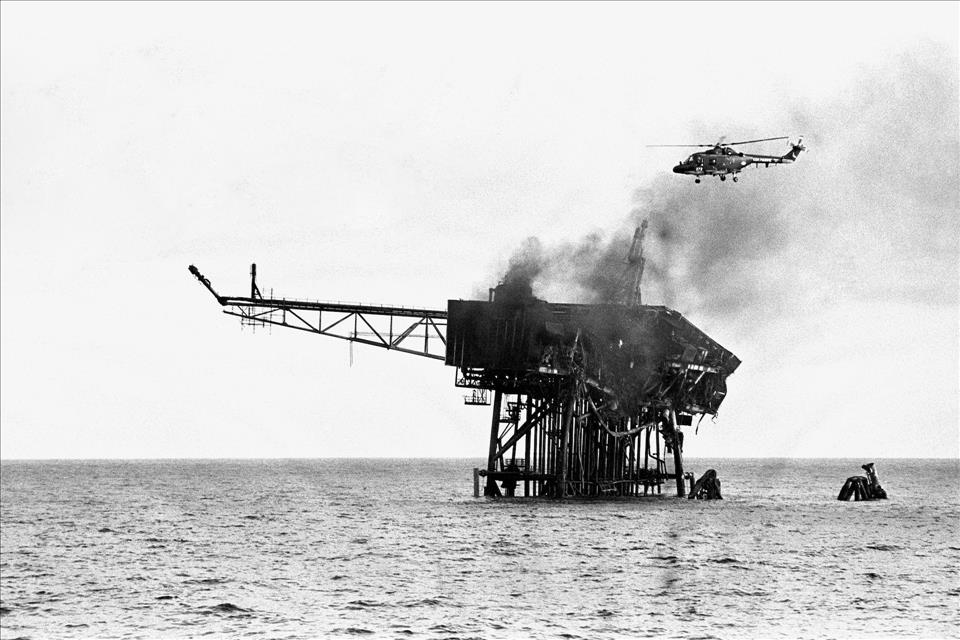(MENAFN- The Conversation) The UK's most active period of privatisation saw health and safety disasters and fatalities increase dramatically. In recently published research , we identified 27 multifatality disasters between 1979 and 1997 leading to 763 deaths. These figures were the highest compared with three other European countries.
During that period, the then prime Minister margaret thatcher , followed by John Major, led the drive for sustained and intense privatisation of state-owned enterprises. Under both leaders, transport, construction, care homes and some hospital and health services were sold or partially sold to the private sector .
Profits and cost-cutting were put before people as the government weakened health and safety regulations . Private sector companies could cut costs further by reducing staff levels and health and safety resources, knowing there would be fewer inspections, fines and enforcement of regulation.
This period corresponded with a significant rise in the number of disasters, and resulting deaths, compared with other periods in recent history. Between 1979 and 1997, the UK's annual death rate related to health and safety disasters was 322% higher than it was from 1998 to 2007, when the privatisation drive was less intense.
Using the international emergency events database , we looked at multifatality disasters where 10 or more people died. We examined disasters from across countries and sectors, but only those due to technical causes (failures in management, safety systems and equipment). Disasters from natural causes (floods or landslips) were left out.
Safety failures
When regulation and scrutiny is reduced and cost-cutting is king, we should not be surprised that multifatality disasters increase. There are numerous examples of how health and safety shortcuts took lives in the years during and after the privatisation drive.
The period we examined saw an unusually large number of fatal rail crashes. British Rail was privatised between 1994 and 1997 – but prior to that date, the government was already pressing to make industry conditions favourable to privatisation by cutting costs.
The 1988 crash at Clapham Junction was one consequence of this approach. It was the result of a deficient safety culture where wiring and signal failures regularly went undetected by independent checks and inspections, and where maintenance staff and electricians worked week after week without a break.
After an inquiry found British Rail responsible for the crash , the government still did not approve recommended measures to improve rail safety. Once services were privatised, safety failures contributed to later disasters at hatfield (2000) and Potters Bar (2002). Ultimately, Railtrack was returned to public ownership in 2002.
The Clapham Junction rail disaster was another casualty of relaxed attitudes to health and safety regulation, driven by privatisation. david levenson / alamy stock photo Our findings suggest this privatisation culture contributed, both directly and indirectly, to loss of life during this period. The lax attitude to health and safety – driven by privatisation ideology – also influenced government oversight of private companies.
The 1987 MS Herald of Free Enterprise ferry sinking killed 193 passengers and crew. It was caused by a range of factors including a company culture of ignoring important expert advice, according to a government investigation .
In 1988, the explosion of the North Sea Piper Alpha oil platform killed 167 people . Though it involved an American private company, because it was operating in the North Sea the UK government had oversight – and its offshore safety regulatory regimes were fatally deficient. A government inquiry uncovered poor maintenance and safety practices, and dozens of regulatory failures to identify those deficient procedures.
The Piper Alpha disaster is an example of where oversight of the private sector, in line with privatisation ideologies, failed. This led to offshore safety regulations being introduced in 1992. However, implementing these in a deregulatory climate proved difficult.
The impacts of this era are still felt today. In 1997, the Major government privatised the building research establishment . This has had adverse implications for testing of construction materials and public and worker safety, right up to the grenfell disaster . The company was responsible for testing the cladding used on the tower.
Of course, not all major disasters during this period can be directly linked to privatisation and deregulation measures, but these examples show how health and safety suffered under the ideology of the time.
Global picture
We compared the UK data on multifatality disasters with other European countries like Germany, France and Italy, which did not adopt the same privatisation strategies. The UK had a disproportionate number of disasters and fatalities – in some cases, twice as high as these countries for the same period. For example, the UK rate was 225% higher than that of Germany between 1979 and 1997.
UK privatisation was, and continues to be, accompanied by the removal or softening of regulatory requirements and the weakening of regulatory agencies through budget and staff cuts.
Governments after Major's were less aggressive with their privatisation policies. However, the current UK government is proposing to exempt more than 40,000 businesses from reporting requirements and regulations on health, safety and the environment.
grenfell and the healthcare worker and care home fatalities during the pandemic are further grim reminders of the costs that workers and the public can pay for such policies.
Our findings should deter, or at least delay, the aggressive initiatives the government is now proposing. More privatisation, deregulation and cost-cutting for critical safety services could have serious consequences.

























Comments
No comment